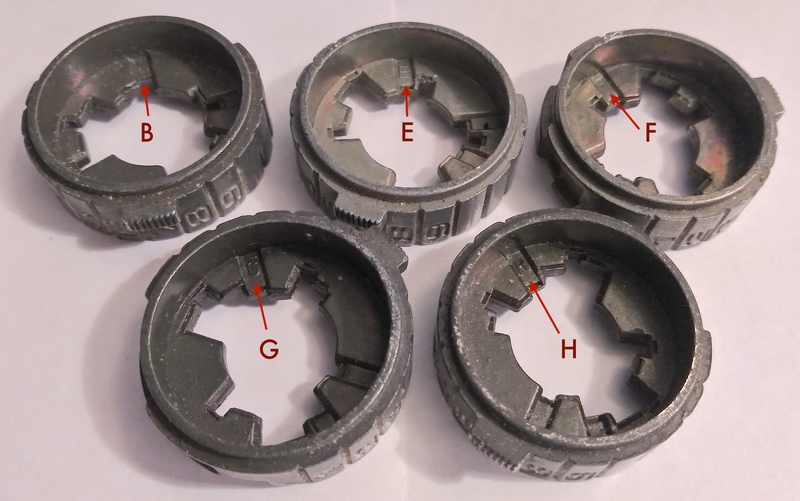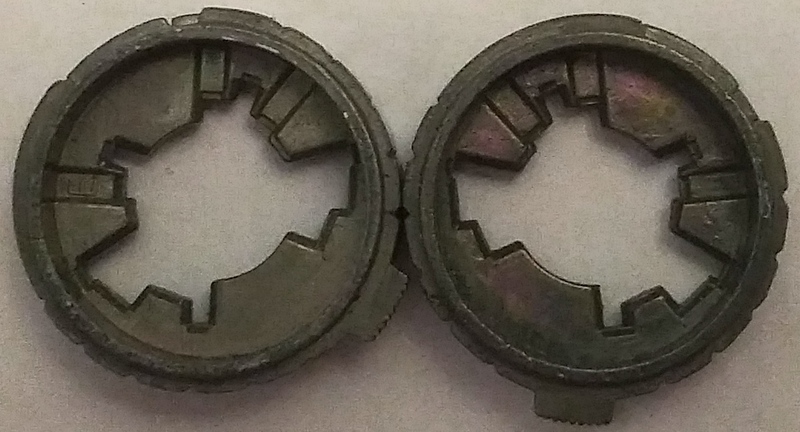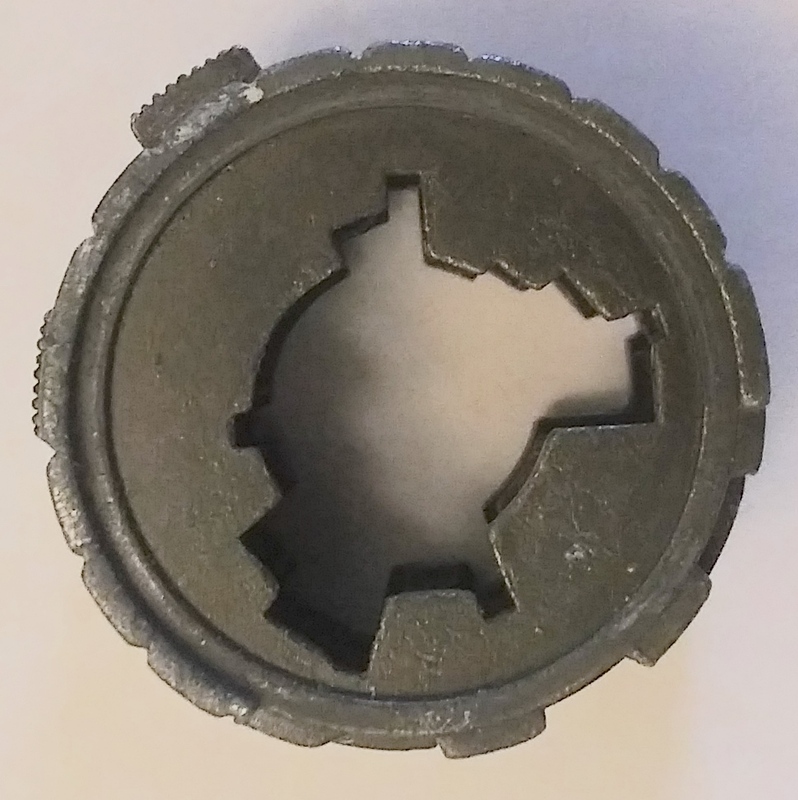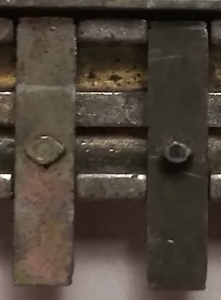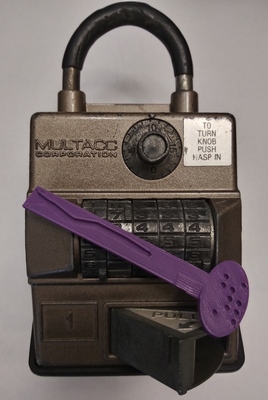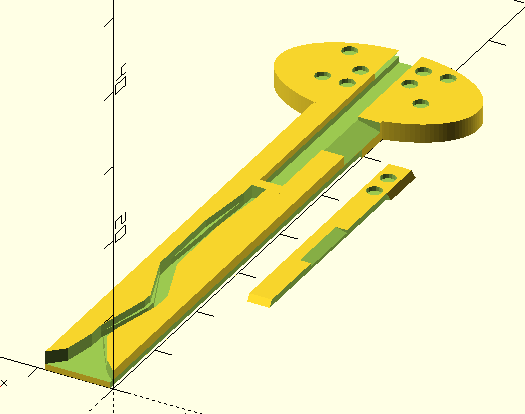Technical notes
Exactly five different code wheels were manufactured1, mysteriously labeled B, E, F, G, H. They all have false gates on the bottom and top sides, as well as serrations on the tips that match serrations made in the sliders, which prevent a close but inexact match being forced through.
Wheels E&F and G&H are mirror images of each other, including false gate positions.
By mirror images, we mean that E1 + F7 = 8 = E2 + F6 = E3 + F5 = …
(The symmetry turns out to be coincidence, not a way for manufacturing to reuse parts,
as each wheel still needs its own tooling.1)
There never was a wheel A!
The pegs on the sliders that interact with the key come in at least two different variations, with unique diameters and nub heights, requiring distinct bitting depth and track depth data for each. This was an intentional design choice1 to further frustrate would-be attackers. These variations in slider pegs require track-in-track keys2 and are difficult to overcome with improvised tools.
